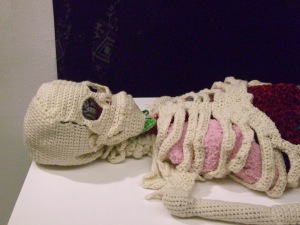Whoa. Why did it take me so long to come across ArtSTEM?? ArtSTEM (http://www.artstem.org) is a project led by science faculty member, Dr. Janna Levin (http://www.uncsa.edu/academicprograms/faculty27.htm), and a history faculty member, Michael Wakeford (http://faculty.uncsa.edu/generalstudies/wakefordm/), at the University of North Carolina School of the Arts (http://www.uncsa.edu). It’s alway a pleasure to find a STEAM-related project that is led by both a scientist and someone from the humanities. Without both of those perspectives in the leadership, sometimes the approach is too one-sided and the project’s efforts fail to effectively communicate clearly across disciplines.
ArtSTEM faculty projects involve arts high school and university students in a great variety of projects including plays about the process of science, food science and food presentation, the intersection of anatomy & physiology with dance, the intersection of judo with physics, short films on science that use animation and puppetry, the art and technology of sound, the sonification of solar data, and the aesthetics of regulation in architecture.
ArtSTEM is even offering what looks like a very interesting course this coming semester. I encourage you to read the course description! http://www.artstem.org/2013/04/22/artstem-course-planned-for-spring-2014/





You must be logged in to post a comment.